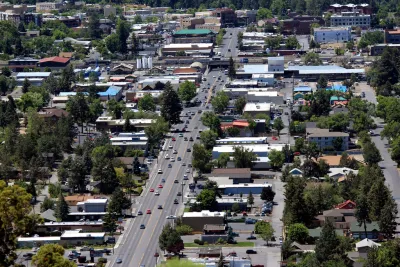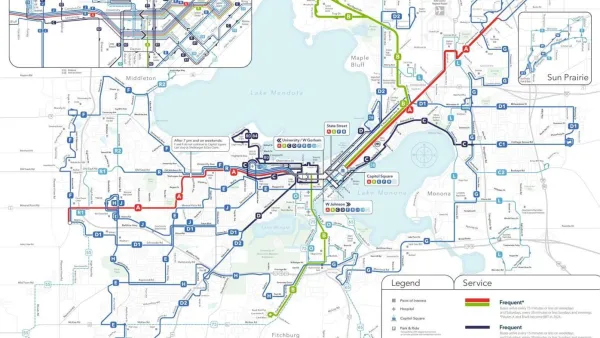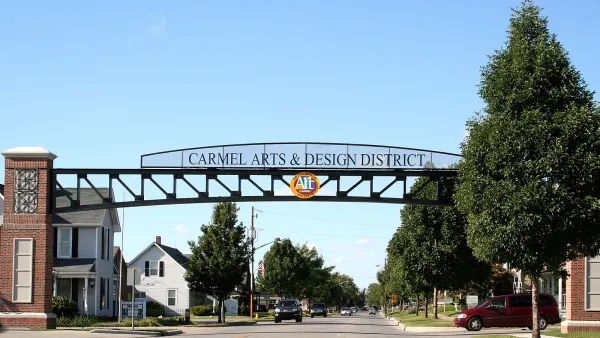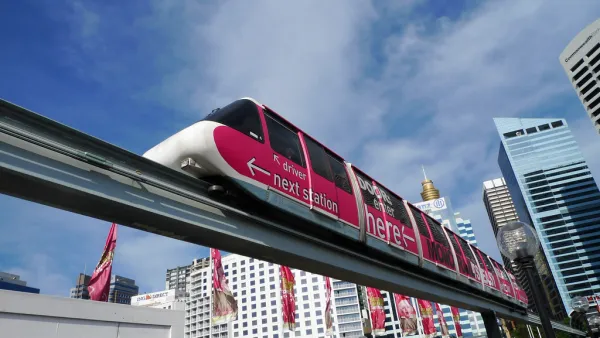The future of smaller cities could depend on figuring out a way to improve transit, perhaps not at the neighborhood or level, but at the corridor level.

"The state of transit in the US is, generally, pretty damn poor, and this is especially true of smaller cities and towns," writes Sandy Johnston. "Generally, transit in those places is, shall we say, not particularly useful; generally it’s conceived of as a last resort, welfare transit, the kind of thing that only people with no other options use. That’s a product of mentality, but also of lack of resources."
According to Johnston, many older cities, even the smaller ones, have "good bones," and are thus "potentially salvageable as places of good, safe, walkable mixed-use urbanism." The catch, as Johnston describes it, is that there's often only one corridor appropriate for high-frequency transit in small cities, though "the most urban corridor is likely underserved, because of the general terribleness of American transit; but in the smaller cities, this likely means that the city has lost any chance at transit-based urbanism at all." [Emphasis is the author's.]
What follows is "a thought exercise about how small-city transit might look if more funding–or different funding–were available, enough to let agencies focus on intensive service on the best corridors." Johnston also provides some case studies of these concepts: Utica, Binghamton, Kingston, and Glens Falls, and other northeastern and Midwestern cities.
Hat tip to Angie Schmitt for sharing the article.
FULL STORY: Building Urbanism and Transit in Small Cities

National Parks Layoffs Will Cause Communities to Lose Billions
Thousands of essential park workers were laid off this week, just before the busy spring break season.

Retro-silient?: America’s First “Eco-burb,” The Woodlands Turns 50
A master-planned community north of Houston offers lessons on green infrastructure and resilient design, but falls short of its founder’s lofty affordability and walkability goals.

Delivering for America Plan Will Downgrade Mail Service in at Least 49.5 Percent of Zip Codes
Republican and Democrat lawmakers criticize the plan for its disproportionate negative impact on rural communities.

Test News Post 1
This is a summary

Test News Headline 46
Test for the image on the front page.

Balancing Bombs and Butterflies: How the National Guard Protects a Rare Species
The National Guard at Fort Indiantown Gap uses GIS technology and land management strategies to balance military training with conservation efforts, ensuring the survival of the rare eastern regal fritillary butterfly.
Urban Design for Planners 1: Software Tools
This six-course series explores essential urban design concepts using open source software and equips planners with the tools they need to participate fully in the urban design process.
Planning for Universal Design
Learn the tools for implementing Universal Design in planning regulations.
EMC Planning Group, Inc.
Planetizen
Planetizen
Mpact (formerly Rail~Volution)
Great Falls Development Authority, Inc.
HUDs Office of Policy Development and Research
NYU Wagner Graduate School of Public Service





























